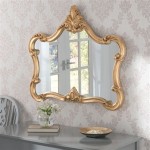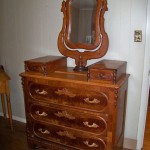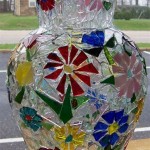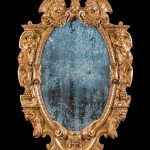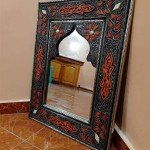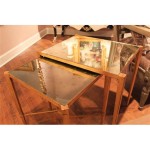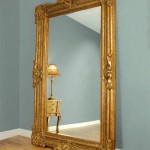Does a Concave Mirror Make Things Bigger?
Concave mirrors, with their inwardly curving reflective surface, possess the fascinating ability to manipulate light and create a variety of image sizes. Whether a concave mirror makes an object appear larger or smaller depends entirely on the object's position relative to the mirror's focal point and center of curvature.
Understanding Key Terms
Before delving into the magnification properties of concave mirrors, it's essential to define some key terms:
- Focal Point (F): The point where parallel light rays converge after reflection off the mirror.
- Center of Curvature (C): The center of the sphere from which the mirror is a section.
- Principal Axis: An imaginary line passing through the center of curvature and the vertex (center) of the mirror.
- Vertex (V): The center point of the mirror's reflecting surface.
- Object Distance (u): The distance between the object and the mirror's vertex.
- Image Distance (v): The distance between the image and the mirror's vertex.
- Focal Length (f): The distance between the focal point and the mirror's vertex (half the radius of curvature).
Magnification: The Key Concept
Magnification (M) describes the ratio of the image height (hi) to the object height (ho). It indicates how much larger or smaller the image is compared to the object. A magnification greater than 1 signifies an enlarged image, while a magnification less than 1 indicates a reduced image. A negative magnification value indicates an inverted image.
Object Beyond the Center of Curvature
When an object is placed beyond the center of curvature (u > 2f), the concave mirror forms a real, inverted, and diminished image between the center of curvature and the focal point. In this case, the magnification is less than 1.
Object at the Center of Curvature
Positioning the object exactly at the center of curvature (u = 2f) results in a real, inverted image also located at the center of curvature. The image size is equal to the object size, meaning the magnification is 1.
Object Between the Center of Curvature and the Focal Point
When the object lies between the center of curvature and the focal point (2f > u > f), the concave mirror produces a real, inverted, and magnified image beyond the center of curvature. The magnification is greater than 1.
Object at the Focal Point
Placing the object at the focal point (u = f) results in no image formation. The reflected rays are parallel and do not converge to form an image. Theoretically, the image is formed at infinity.
Object Between the Focal Point and the Mirror
When the object is located between the focal point and the mirror (u < f), the concave mirror generates a virtual, upright, and magnified image behind the mirror. The magnification is greater than 1. This is the scenario where concave mirrors are commonly used for magnification, such as in makeup mirrors.
The Mirror Formula and Magnification Equation
The relationship between object distance, image distance, and focal length is mathematically represented by the mirror formula:
1/u + 1/v = 1/f
The magnification can also be calculated using the following equation:
M = -v/u = hi/ho
Applications of Concave Mirrors
The unique properties of concave mirrors make them valuable tools in various applications:
- Telescopes: Large concave mirrors are used to collect and focus faint light from distant celestial objects.
- Headlights: Concave mirrors reflect light from a light source into a parallel beam, creating a focused beam of light.
- Shaving/Makeup Mirrors: The magnifying effect when the object is close to the mirror allows for a larger, more detailed view.
- Solar Furnaces: Large concave mirrors can concentrate sunlight onto a small area, generating intense heat.
Factors Affecting Magnification
The degree of magnification achieved by a concave mirror is influenced by the following factors:
- Radius of Curvature: A smaller radius of curvature results in a shorter focal length and greater magnification potential.
- Object Distance: As the object moves closer to the focal point, the magnification increases. The largest magnification occurs when the object is just inside the focal point.

Question Comparing The Sizes Of Images Produced By A Concave Mirror Nagwa
Objects In The Mirror Are Actually Images Article Khan Academy
How Do Reflections From Convex Mirrors Make Objects Appear Smaller Quora
Objects In The Mirror Are Actually Images Article Khan Academy
Objects In The Mirror Are Actually Images Article Khan Academy

Spherical Mirrors Physics For Mcat
Why Does The Car Side Mirror Display Objects Appear Further Than They Are Not Just Make As Quora

How To Choose The Right Sized Safety Mirror Jaybro Blog
Under Which Condition A Concave Mirror Can Form An Image Larger Than The Actual Object Quora

How Are Concave Mirrors Used Sciencing

